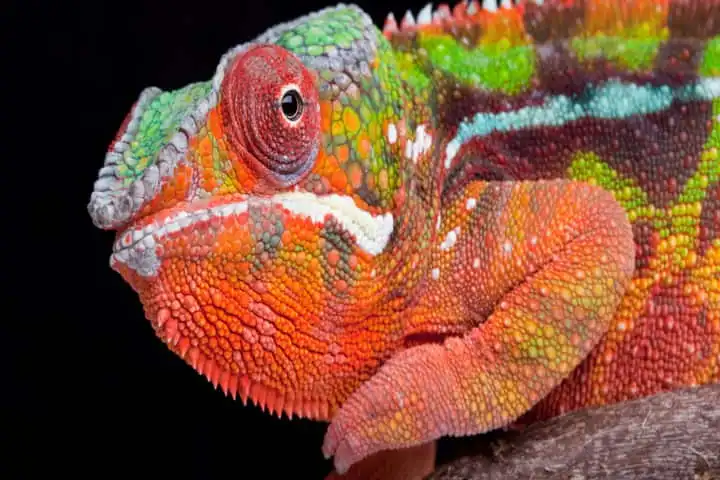The word chameleon has come to denote both positive and negative connotations. This ability is described as being pragmatic to adjust to a situation while being also criticised as lacking conviction to stand up against a wave!
Yet, these reptiles have fascinated human beings since time immemorial!
Now Korean researchers continuing with enrapturement with this reptile have made a robotic one. It has all its physical features, including the googly eyes and the waddle-style stride while having the single most important characteristic – it can change the skin colour on demand.
The article on this subject in smithsonianmag.com quoted the author of the study Seung Hwan Ko, who said: “It's walking around and also changing colour at the same time. So it's kind of like a full working chameleon.” Ko is a mechanical engineer at South Korea’s Seoul National University.
The electronic skin which is artificial, changes its hue to match with the colour of the background as it moves around. In fact, the device is one of the first which can alter its colour and pattern based on the environment according to the study published in the journal Nature Communications.
The gadget will help technicians and scientists to make active camouflage wear for the armed forces and also the fashion designers to create a fashion line which will display different colours based on what the background looks like.
Going beyond the colours, the robot has the ability to show many patterns in its exterior which are pre-programmed. It is not necessary for the skin to look like a mirror image of the background but rather just like the chameleon blend in with the surroundings.
Also read: Study reveals Polar bears could have used rocks and ice chunks to kill and eat Walruses
In order for the robot to have this capability, the scientists gave the skin a vast choice of patterns to choose from which can come into being on their own. These patterns include pre-patterned stripes, dots and curlicues.
Sukjoon Hong, Hanyang University’s mechanical engineer and another study author observed: “It is not necessary to match the background perfectly, because as [long] as it is complex enough, then we can get sufficient amount of [camouflage].”
In order to provide the robot’s a coat with several colours, the scientists created a “skin” which uses a thin glaze of liquid crystal ink. This can take any colour based on the alignment of its molecules. They take a specific colour based on the helical structure they assume. The structure size spells the colour. For example, reddish tints come into being with larger repeating arrangements while arrangements which are tighter give a blue tint.

Chameleon (Pic Courtesy wikimedia commons)
The change in ink is due to temperature and so prepatterned heater strips have been piled up under the fake skin. Ten colour sensors are located in the underbelly of the robot to enable it to get an idea of the hue beneath its feet. When the colour information is communicated to the control unit, the heaters are activated to suitably match the floor colour and markings. To keep the colours steady, a device is installed in the robot. Thus, the colour matching takes just half a second.
While liquid crystals that are temperature sensitive aren’t new, their effective use is novel and impressive, remarked Chengyi Xu, a Stanford materials engineer who was not involved in the study. Appreciating that the researchers have done well to integrate several technologies, Xu remarked: “This is more towards the future of autonomous colour-changing devices.”
Also read: Lions of the Arctic — 27,000-year-old ice-age corpse of lion cub raises new questions
According to University of Nebraska-Lincoln chemist Steven Morin, the robot has a narrow temperature range – from 78 degrees Fahrenheit to approximately human body temperatures of 97 degrees. According to him while nature makes it look so easy yet it is tough to ape the response time and its patterns though the team has several solutions up its sleeves.
Now the scientists are aiming to build another icon of colour change, the octopus.
The fascination with these creatures continues though, Xu believes we have a long way to go. “Everything is just so sophisticated,” he remarked.




















